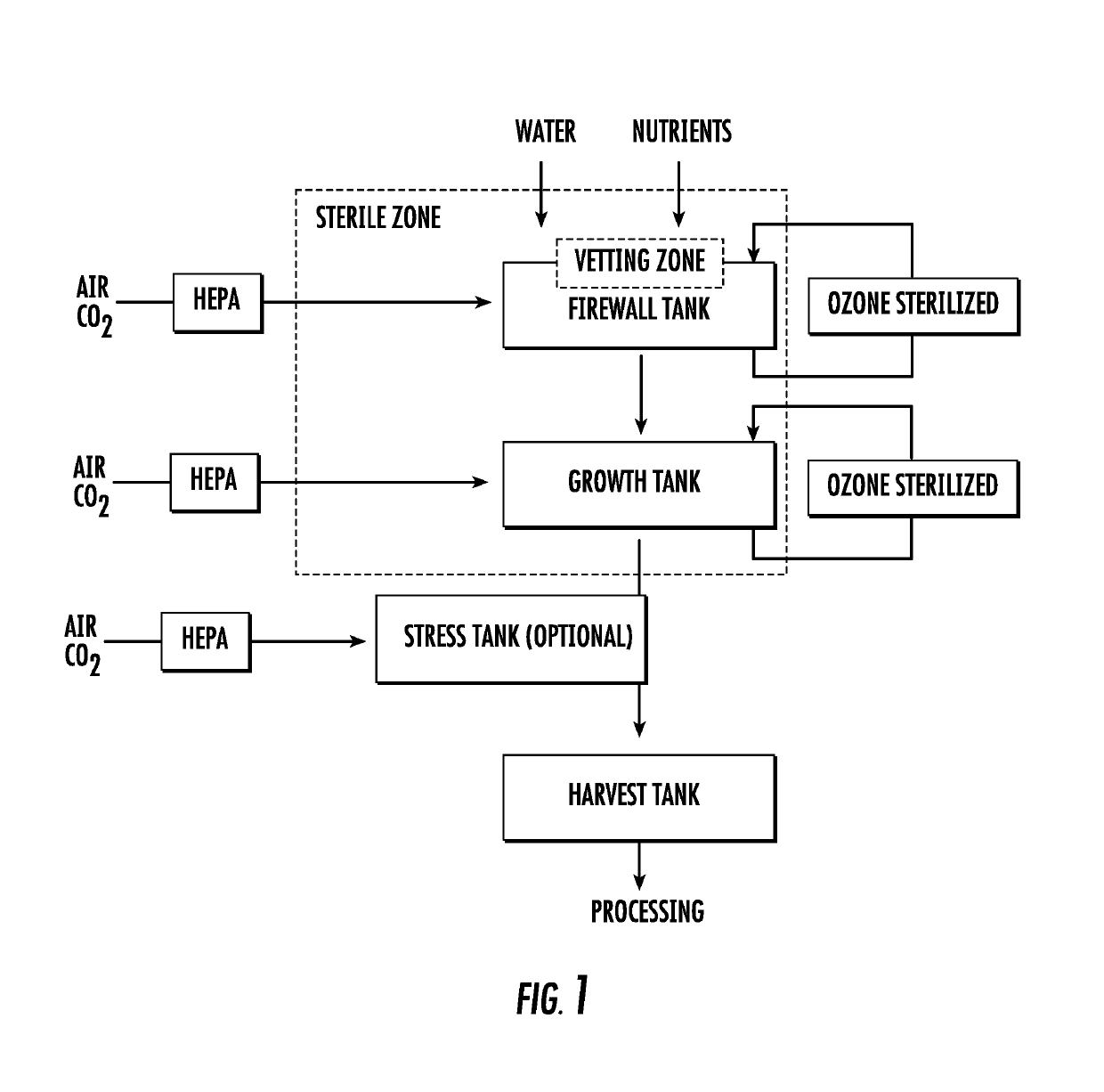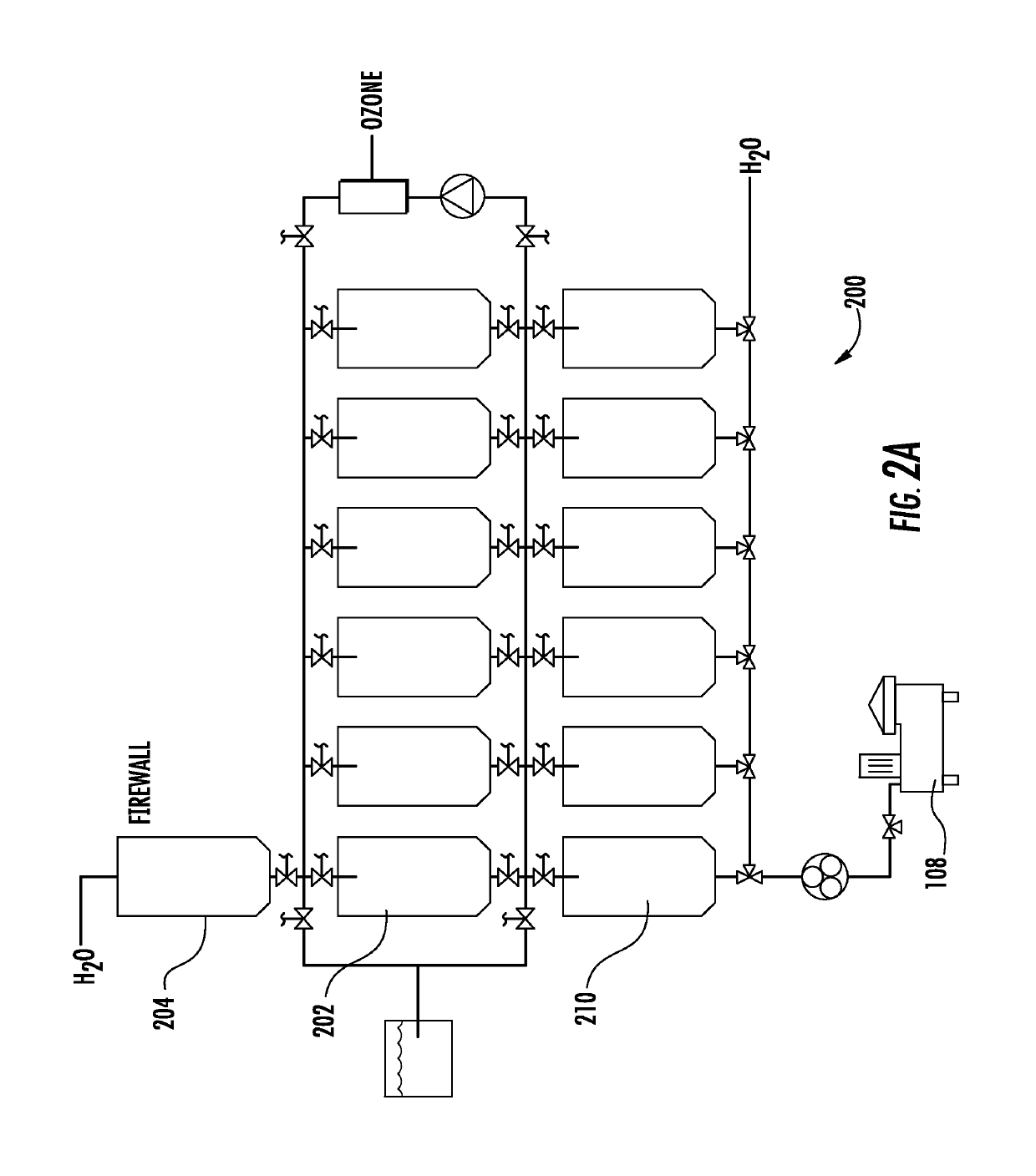Light emitting diode photobioreactors and methods of use
a light-emitting diode and photobioreactor technology, applied in the field of bioreactor systems, can solve the problems of limited scaling up, limited led lighting, and insufficient teaching or suggesting of photosynthetic organisms, so as to maximize homogeneous light distribution, limit contamination, and ensure the effect of turbulen
- Summary
- Abstract
- Description
- Claims
- Application Information
AI Technical Summary
Benefits of technology
Problems solved by technology
Method used
Image
Examples
examples
Algal Biomass Process Control Protocols and Parameters
[0126]Each type of bioreactor, alga strain, and end usage for the algae require specific methods and standard operating protocols to be tailored and optimized. The following protocols intend to provide an overall understanding of the process and key steps necessary to run a tank-based photo-bioreactor in accordance with the present invention.
[0127]The construction and arrangement of the working environment has been designed to limit, to the utmost extent possible, any external contaminations, therefore good manufacturing practices (GMPs) and clean room operation (HEPA filtered, operator wearing protective equipment) are used as many water and airborne parasites can interfere and contaminate algae being grown for considerable amount of time in a semi-continuous method unlike a batch system.
Growth Phase: Cylindrical and IBC Tanks
Morning Setup as an Operator would Walk in:
[0128]Firewall tank is already filled with water and nutrient...
PUM
| Property | Measurement | Unit |
|---|---|---|
| wavelengths | aaaaa | aaaaa |
| density | aaaaa | aaaaa |
| density | aaaaa | aaaaa |
Abstract
Description
Claims
Application Information
 Login to View More
Login to View More - R&D
- Intellectual Property
- Life Sciences
- Materials
- Tech Scout
- Unparalleled Data Quality
- Higher Quality Content
- 60% Fewer Hallucinations
Browse by: Latest US Patents, China's latest patents, Technical Efficacy Thesaurus, Application Domain, Technology Topic, Popular Technical Reports.
© 2025 PatSnap. All rights reserved.Legal|Privacy policy|Modern Slavery Act Transparency Statement|Sitemap|About US| Contact US: help@patsnap.com



